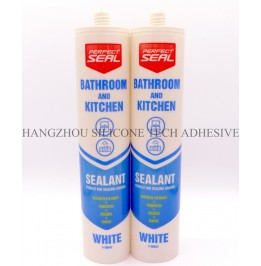Marble, a metamorphic rock composed primarily of calcium carbonate, is highly susceptible to damage from alkaline substances. Alkaline sealants, often used for their durability and adhesion, can react chemically with marble surfaces, leading to etching, discoloration, or structural weakening. Understanding these interactions and implementing preventive measures is essential for preserving marble’s aesthetic and structural integrity in both residential and commercial settings.

Marble’s primary component, calcium carbonate (CaCO₃), reacts with alkaline compounds like hydroxides or carbonates in sealants. When exposed to high pH levels (above 9), calcium carbonate dissolves into calcium ions and bicarbonate, weakening the stone’s surface. This process, known as chemical etching, manifests as dull spots, rough textures, or loss of polish. Even short-term contact with alkaline residues can cause irreversible damage.
Alkaline sealants may introduce sodium, potassium, or other alkali metals to marble surfaces. These ions react with atmospheric carbon dioxide and moisture to form soluble salts, such as sodium carbonate. As water evaporates, these salts crystallize beneath the surface, creating pressure that leads to spalling (flaking) or cracking. This effect is particularly pronounced in humid environments where salt deposition accelerates.
Countertops, floor tiles, and shower thresholds are vulnerable to alkaline sealant exposure. Spills or drips during application can pool on horizontal marble surfaces, increasing contact time and corrosion risk. In bathrooms, alkaline cleaners used near marble may accidentally splash onto sealed joints, exacerbating degradation. Protective barriers or careful application techniques are critical in these areas.
Marble used in outdoor sculptures, facades, or pool surrounds faces prolonged exposure to alkaline pollutants like cement runoff or hard water. Rainwater mixed with alkaline dust can seep into joints sealed with incompatible products, triggering corrosion over time. For indoor pools, chlorinated water combined with alkaline sealants may create a corrosive environment that attacks marble edges and grout lines.
Before applying any sealant, thoroughly clean marble surfaces to remove dirt, oils, or existing coatings. Use pH-neutral cleaners specifically formulated for stone to avoid introducing additional alkalinity. After cleaning, rinse the surface with distilled water and dry it completely. If residual alkalinity is suspected, apply a mild acidic solution (e.g., diluted vinegar) to neutralize the pH, followed by a thorough rinse and drying.
Conduct small-scale compatibility tests on inconspicuous areas of the marble. Apply a small amount of the alkaline sealant to a test patch and monitor it for 24–48 hours. Look for signs of etching, discoloration, or texture changes. If adverse reactions occur, discontinue use and select a neutral or stone-specific sealant instead. Document test results to inform future material choices.
After applying an alkaline sealant, consider adding a layer of protection to vulnerable marble surfaces. Penetrating sealers designed for stone can create a hydrophobic barrier that reduces moisture absorption and minimizes contact with alkaline residues. For high-traffic areas, use mats or runners to shield marble floors from spills. In kitchens, avoid placing acidic or alkaline substances directly on marble countertops.
Schedule monthly inspections of sealed marble joints and surfaces. Check for dull patches, cracks, or salt efflorescence, which indicate ongoing corrosion. Clean marble regularly using pH-neutral stone cleaners and soft cloths to avoid abrasive damage. For stubborn stains, consult a professional stone restorer rather than using harsh chemicals. Promptly address spills to prevent alkaline substances from penetrating the surface.
Ensure adequate ventilation during sealant application to disperse fumes and reduce humidity. High humidity levels can slow curing times and trap alkaline residues on marble surfaces. Use fans or dehumidifiers in enclosed spaces to maintain optimal drying conditions. After application, keep the area well-ventilated until the sealant fully cures to minimize prolonged contact with marble.
Store alkaline sealants in a cool, dry place away from direct sunlight to prevent chemical degradation. Keep containers tightly sealed to avoid leaks or spills. When handling sealants, wear gloves and protective eyewear to prevent skin or eye contact. If accidental spills occur on marble, clean them immediately with water and a neutral cleaner, then dry the area thoroughly.
By understanding the risks posed by alkaline sealants and adopting preventive measures, property owners and contractors can protect marble surfaces from corrosion. Proper material selection, surface preparation, and ongoing maintenance are key to ensuring marble retains its beauty and durability for years to come.
Copyright 2019 by Hangzhou Silicone Tech Adhesive Co., Ltd. All rights reserved.
Bathroom Sealant | Acrylic Sealant | Dow Corning 795 | Aquarium Sealant | Dow Corning 732 | Clear Silicone Sealant | Polysulfide Sealant | Glazing Sealant | Mirror Sealant | IG Sealant
Powered by Onepound